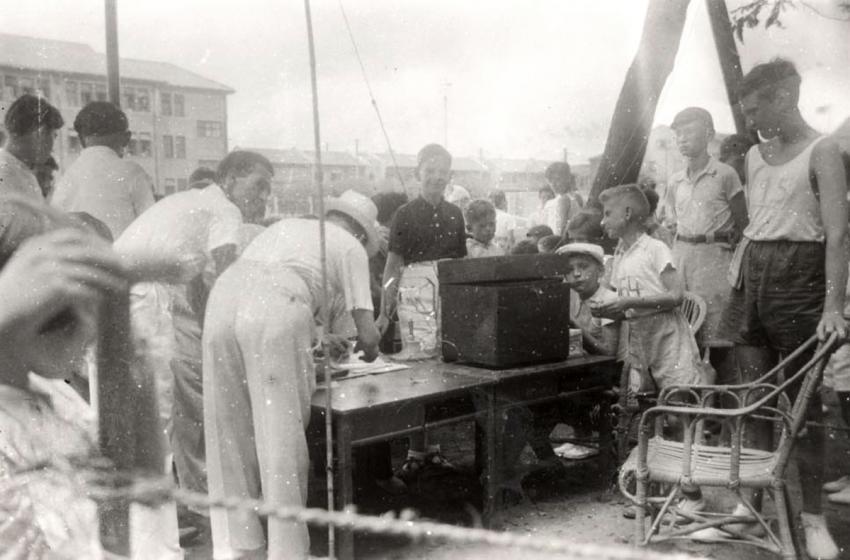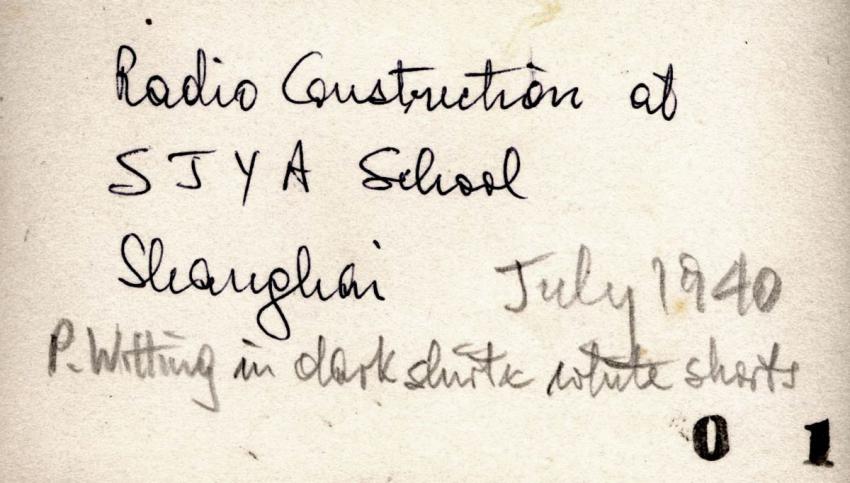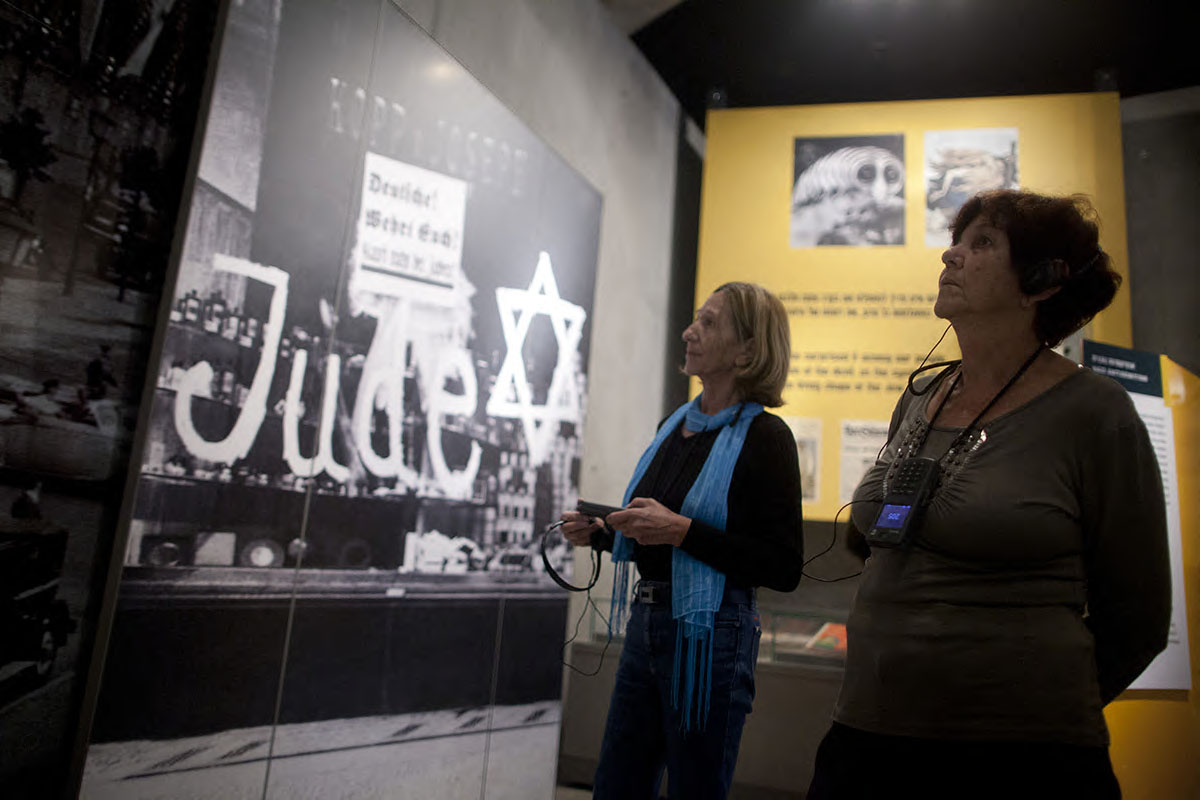
the boy in the center of the photograph, wearing a dark shirt and white shorts, is Peter Witting
Yad Vashem Photo Archives 4648/2

Yad Vashem Photo Archives 4648/2
Sunday to Thursday: 09:00-17:00
Fridays and Holiday eves: 09:00-14:00
Yad Vashem is closed on Saturdays and all Jewish Holidays.
Entrance to the Holocaust History Museum is not permitted for children under the age of 10. Babies in strollers or carriers will not be permitted to enter.

the boy in the center of the photograph, wearing a dark shirt and white shorts, is Peter Witting
Yad Vashem Photo Archives 4648/2

Yad Vashem Photo Archives 4648/2
A port city in China occupied by Japan from 1937, Shanghai was a haven for Jewish refugees from Germany, Austria, and Poland during World War II, as it was possible to enter without a visa. After the Kristallnacht pogrom of 9-10 November 1938, many refugees began to arrive in Shanghai. The refugee community included Polish intellectuals, Zionist leaders, and rabbis and students of the Mir Yeshiva. By 1941, 17,000 Jews had moved to East Asia. They were aided by the small, wealthy community of 400-500 Iraqi Jews that had been living in Shanghai since the mid-nineteenth century, a community of 3,000-4,000 Russian Jews, and by the American Jewish Joint Distribution Committee. These groups set up five large refugee camps for more than 3,000 people.
Despite their economic constraints, the refugees were able to create an active social, religious, and cultural existence with a Zionist movement, cultural productions, three German-language newspapers, and a radio station. Two Jewish elementary schools were established, where the children learned a number of subjects, including Hebrew and Chinese. The Shanghai Jewish Youth Association School offered lessons on a wide variety of subjects including mathematics, physics, Hebrew and Chinese and at the Ort School, they studied Japanese and engineering. Religious services of all affiliations were held, from liberal to orthodox.
In December 1941, Japan attacked the US and the refugees' situation deteriorated. The US government outlawed the transfer of private and JDC funds, and many Jews were forced to sell all their belongings in order to buy food.
In February 1943 the Germans forced the Japanese to establish a Jewish ghetto in an impoverished neighborhood in the Hongkew quarter of Shanghai. In December 1943, Washington permitted the transfer of funds to occupied territories in Europe and China, and the refugees' situation therefore slowly improved. At the end of the war, most of the refugees left Shanghai for Eretz Israel (Mandatory Palestine) and other Western countries.
One of the refugees, young Peter Witting, wrote a diary in English and German documenting his life in the Shanghai ghetto. He continued to write until 1947, when Peter and his family immigrated to Australia. Peter donated dozens of photographs documenting the life of Jews in Shanghai in the war period to the Yad Vashem Photo Archives. In her letters from Shanghai, Peter's mother Anne Witting insisted on referring to herself and her fellow Jews as "immigrants" as opposed to "refugees", and portrayed them as optimistic, creative and productive, despite the fact that they had been forced to flee their home countries.

Thank you for registering to receive information from Yad Vashem.
You will receive periodic updates regarding recent events, publications and new initiatives.

"The work of Yad Vashem is critical and necessary to remind the world of the consequences of hate"
Paul Daly
#GivingTuesday
Donate to Educate Against Hate


Worldwide antisemitism is on the rise.
At Yad Vashem, we strive to make the world a better place by combating antisemitism through teacher training, international lectures and workshops and online courses.
We need you to partner with us in this vital mission to #EducateAgainstHate
The good news:
The Yad Vashem website had recently undergone a major upgrade!
The less good news:
The page you are looking for has apparently been moved.
We are therefore redirecting you to what we hope will be a useful landing page.
For any questions/clarifications/problems, please contact: webmaster@yadvashem.org.il
Press the X button to continue



